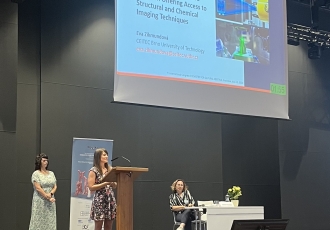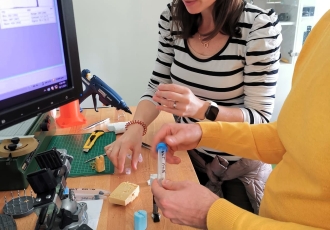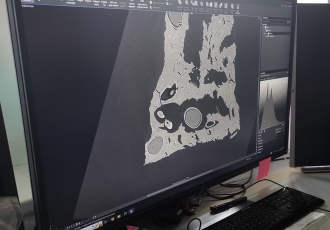15. Oct. 2024
The EXCITE Network initiative aims to improve the understanding of Earth materials through state-of-the-art imaging techniques. The unique infrastructure connects cutting-edge laboratories across Europe with scientists who do not have access to advanced instruments, either because of cost or the unavailability of the technology in their country. The project is funded by the EU’s Horizon 2020 and Horizon Europe programmes to support research, industry and society. The coordinator for CEITEC BUT is Eva Zikmundová.
The project, which lasts four years, offers researchers the opportunity to engage in a variety of scientific and environmental studies. Within the framework of this project, specific calls for proposals for research projects are created. "If anyone is interested in participating, they can send a short two-page description of their project, including the instruments and methods required. This proposal will then be reviewed by the laboratory to see if it can provide the necessary measuring instruments. This is followed by an external evaluation where independent reviewers assess the scientific quality of the project. The project focuses primarily on earth sciences and environmental aspects, but is also open to broader topics as long as they are scientifically valuable and beneficial," explains Eva Zikmundová.
The results of the project will be made publicly available thanks to funding from Horizon Europe. Once the research is completed, it will be published in the Open Access system in the form of scientific articles. If the publication is not ready in time, at least the data must be published. The main coordinator of the initiative is the University of Utrecht in the Netherlands, with a total of 19 other partners coming from twelve European countries.
In the current second phase, the project, which started with X-ray computed tomography (CT) and electron microscopy, has expanded to include new analytical techniques. CEITEC BUT has joined this phase and, according to the coordinator, the first call was successful. "We have already had some projects approved, with a success rate of approximately 87%, which we consider a great success for a first attempt and we are very happy about it. The projects we have received cover a wide range of topics. The main focus is on geology, but we also have projects in biology and the currently popular topic of microplastics. As far as countries are concerned, Slovenia, Norway, Estonia and even the United Arab Emirates are involved," says the coordinator, adding that they cannot have applications from the Czech Republic since the project also focuses on building international relations and broadening horizons. Czech participants must apply to the project’s foreign partners.
The CEITEC BUT laboratories offer a wide range of equipment to researchers within the project, including four specialized CT scanners. These instruments cover a variety of sample types, from high-resolution devices such as nano-CT for very small samples, to instruments for long or large objects and materials that are difficult to illuminate. In addition, CEITEC BUT has a laser spectroscopy laboratory that analyses elemental composition using laser-excited plasma spectroscopy. "Our main advantage lies in the possibility to combine these two analyses – structural analysis by CT and chemical analysis by spectroscopy – in one place. This allows a comprehensive sample processing and yields excellent results, as our previous projects have shown," the scientist clarifies.
The call is open to scientists from all over the world, not just Europe. The only restriction is for Russia because of the war in Ukraine. Participants have the option of either sending samples or coming in person, which the coordinators prefer in order to make new contacts and establish collaborations. The costs of travel, accommodation and meals, as well as sending samples, are covered by the project.
The EXCITE Network initiative follows the current trend in the scientific community towards openness and greater collaboration. Whereas previously readers had to pay for access to scientific articles, either individually or through institutional subscriptions, the emphasis is now on the opposite approach – open access. This model allows for the free dissemination of scientific knowledge to the general public. "The intention is not only to increase the availability of scientific information, but also to promote science and combat misinformation. Sharing scientific results between researchers can lead to greater collaboration and mutual inspiration. For example, if one group learns about another group’s work on a similar topic, it can prevent unnecessary efforts against each other and accelerate progress in the field," explains Eva Zikmundová.
Imaging methods are very important in current research and their open approach has several key advantages. These methods are used in a wide range of fields, from environmental research to medical applications to built heritage conservation. What makes imaging methods so valuable is their ability to provide clear and understandable images and models. These visualizations are often much more accessible to the general public than complex scientific texts and graphs. For example, images obtained by electron microscopy or X-ray computed tomography can show details that are easier for the general reader to understand than dry data. This visual approach not only makes scientific knowledge easier to understand, but also increases their attractiveness and accessibility to a wider audience. An example is the popular installation of a giant inflatable turtle, which was the mascot of the Electron Microscopy Days in Brno.


 Share
Share





